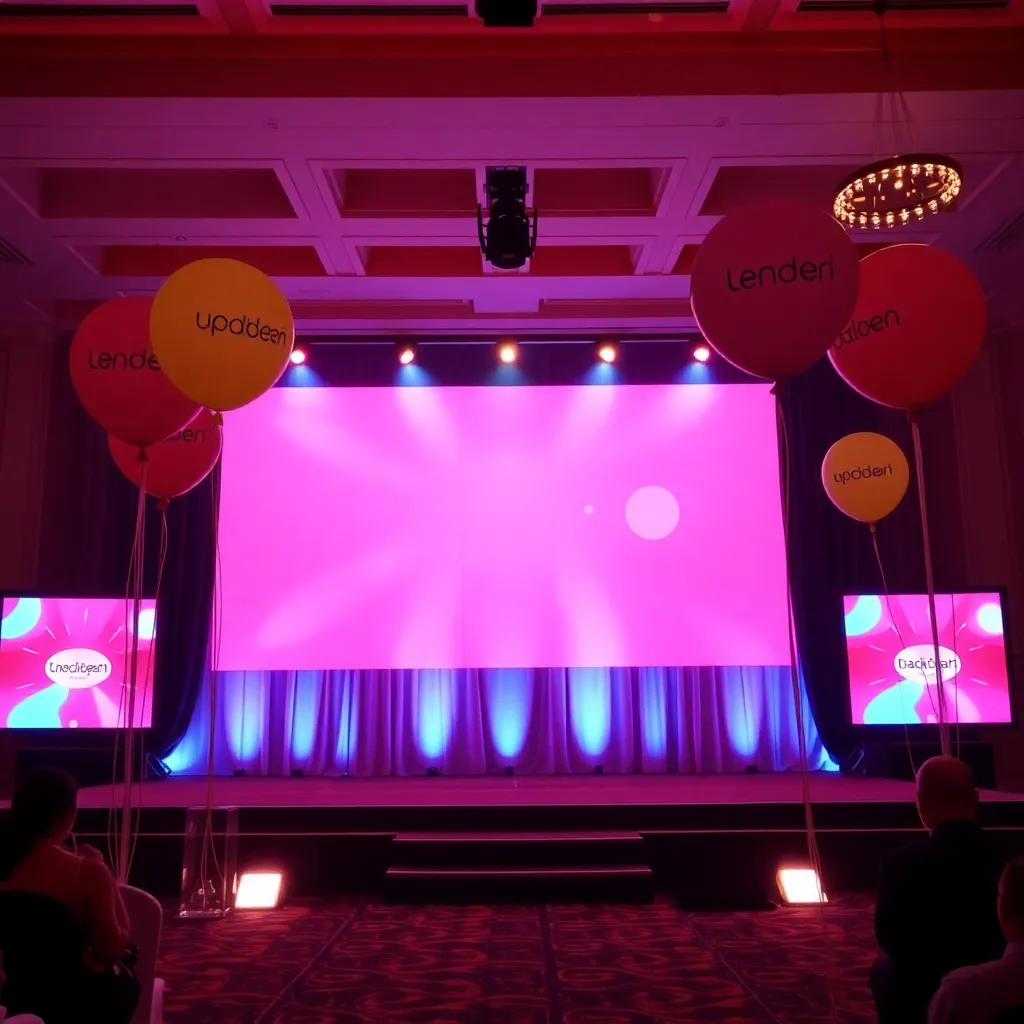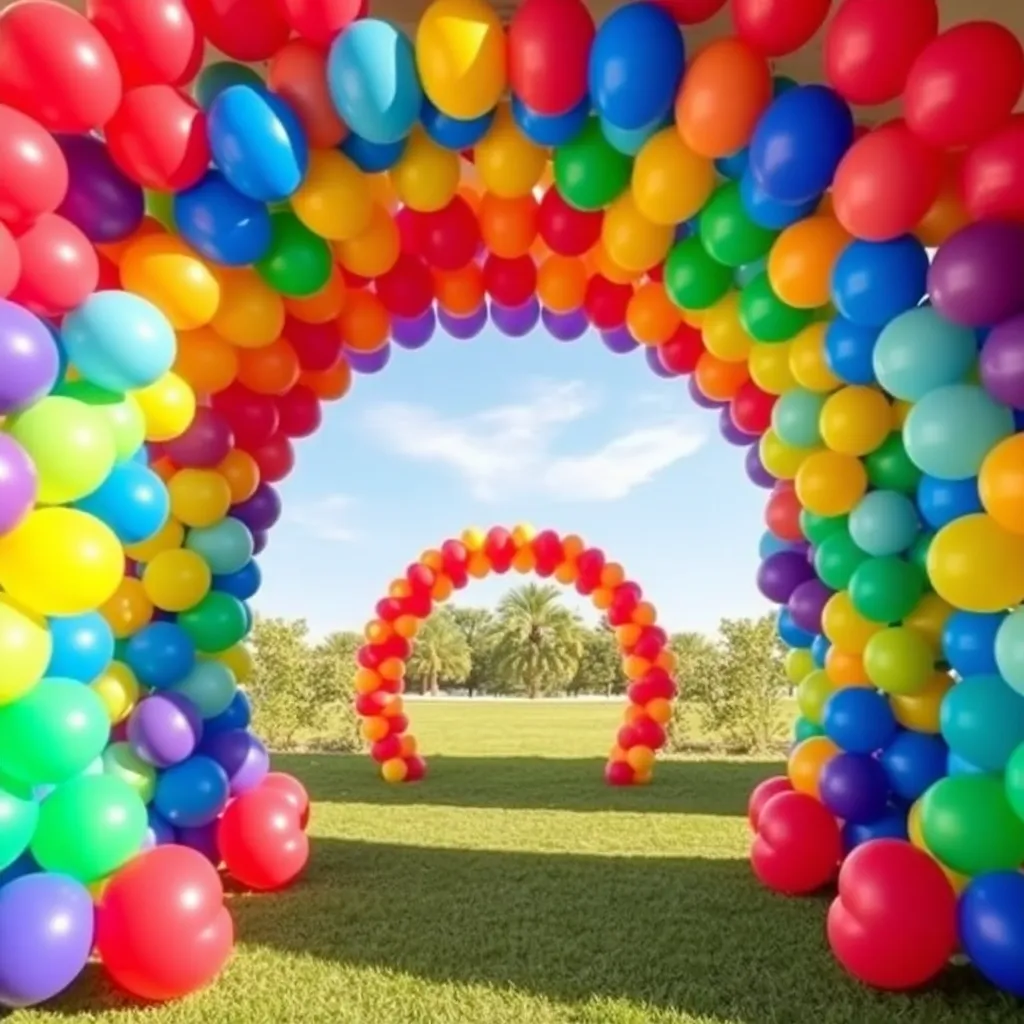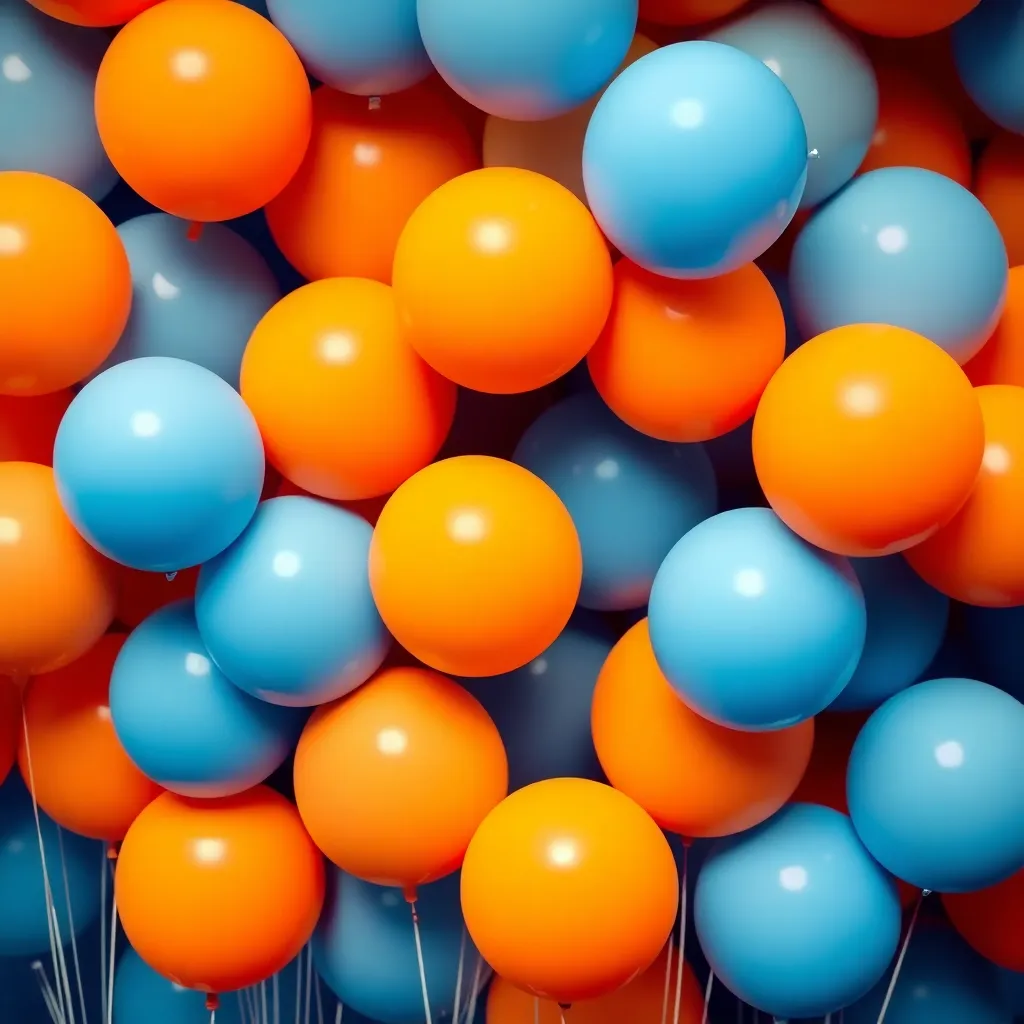The Complete Guide to Professional Stage Balloon Decoration
Transform any event space into a breathtaking celebration with expert techniques, comprehensive planning, and creative vision
Table of Contents
1. Introduction to Balloon Art
The evolution of balloon decoration from simple arches to sophisticated installations
2. Types of Decorations
Comprehensive guide to arches, backdrops, installations and specialty designs
3. Color Theory Mastery
Advanced color psychology and professional palette selection techniques
4. Materials & Equipment
Complete overview of balloons, frames, tools and specialty materials
5. Professional Techniques
Step-by-step methods for creating stunning balloon installations
6. Planning & Budgeting
Detailed event planning handbook featuring cost breakdowns and scheduling strategies.
The Evolution of Stage Balloon Decoration
Stage balloon decoration represents a remarkable evolution in event design, transforming from simple arrangements of helium-filled latex into sophisticated artistic installations that rival traditional floral and fabric decorations. The modern balloon artist combines technical expertise with creative vision to create immersive environments that captivate audiences and elevate event experiences to new heights.
The contemporary approach to balloon decoration involves understanding structural engineering principles, color theory, lighting effects, and spatial design. Professional balloon artists now work with architectural elements, consider sight lines, and create installations that complement rather than compete with the event’s overall design aesthetic. This holistic approach transforms balloon decoration from mere ornamentation into integral components of event storytelling.


The Science Behind Balloon Durability
Understanding balloon chemistry is crucial for professional results. Latex balloons, made from natural rubber, undergo a vulcanization process that determines their elasticity and longevity. High-quality balloons contain more rubber content (typically 60|70%) compared to budget options (40|50%), significantly affecting their durability and appearance. Professional-grade balloons also undergo stricter quality control for consistent sizing and color matching.
Comprehensive Guide to Balloon Installation Types
The diversity of balloon decoration techniques available today allows for unprecedented creative expression. Each type serves specific purposes and requires different skill sets, tools, and planning considerations.
Advanced Arch and Garland Systems
Modern balloon arches have evolved into complex structural systems that can span impressive distances and support additional decorative elements. The four primary arch types each offer unique aesthetic and functional benefits:
Arch Type
Best For
Setup Time
Skill Level
Durability
Traditional Frame Arch
Long spans, heavy decorations
2-4 hours
Intermediate
Excellent (days)
Organic Garland
Natural, free-flowing looks
3-5 hours
Advanced
Good (1-2 days)
Spiral Design
Dynamic visual impact
4-6 hours
Expert
Very Good (2-3 days)
Cluster Pattern
Precision designs, logos
5-8 hours
Expert
Excellent (3+ days)

Sophisticated Backdrop Systems
Balloon walls and backdrops have become increasingly sophisticated, incorporating multiple techniques to create photogenic surfaces that serve as both decoration and functional photography stations. Modern backdrop systems often include:
Backdrop Design Elements
Modular Panels: Pre-assembled sections for quick installation
Integrated Lighting: LED strips and spot lighting effects
Mixed Media: Combination with fabrics, flowers, or acrylic
Interactive Elements: Built-in photo frame cutouts
Brand Integration: Custom printed elements and logos
Advanced Floating Installations
Helium balloon décor has advanced from basic bouquets to elaborate suspended sculptures and dramatic ceiling designs. These installations require precise buoyancy calculations and advanced anchoring systems:
Mastering Color Psychology in Balloon Design
Color selection in balloon decoration extends far beyond aesthetic preference—it’s a strategic decision that influences mood, perception, and event atmosphere. Professional decorators employ advanced color theory principles to create emotionally resonant environments.
The Psychology of Color in Event Spaces
Different colors evoke specific emotional responses that can be strategically employed to enhance event themes:

Color Family
Psychological Impact
Best For
Professional Tips
Warm Colors (Red, Orange)
Energy, excitement, passion
Launch events, celebrations
Use as accents to avoid overwhelming
Cool Colors (Blue, Green)
Calm, trust, sophistication
Corporate events, weddings
Great for large background elements
Neutrals (White, Gray)
Elegance, modernity, space
All events as base colors
Perfect for creating visual breathing room
Metallics (Gold, Silver)
Luxury, celebration, light
Formal events, evenings
Reflective surfaces enhance lighting
Advanced Color Harmony Techniques
Beyond basic color theory, professional decorators employ sophisticated harmony techniques:
Professional Color Strategies
Analogous Harmony: Colors adjacent on color wheel (e.g., blue, blue-green, green)
Tetradic Color Scheme: A combination of four colors organized in a rectangular formation on the color wheel.
Split Complementary: A main color combined with two hues that are adjacent to its opposite color on the color wheel.
Tetradic Harmony: A set of four colors arranged in a rectangular configuration on the color wheel
Monochromatic Depth: Single hue with varied saturation and value
Color Temperature Considerations
Always consider the event’s lighting conditions. Warm artificial lighting enhances reds and oranges, but it may also mute blues and greens. Cool LED lighting does the opposite. Whenever feasible, evaluate color samples in the actual lighting conditions of the event.